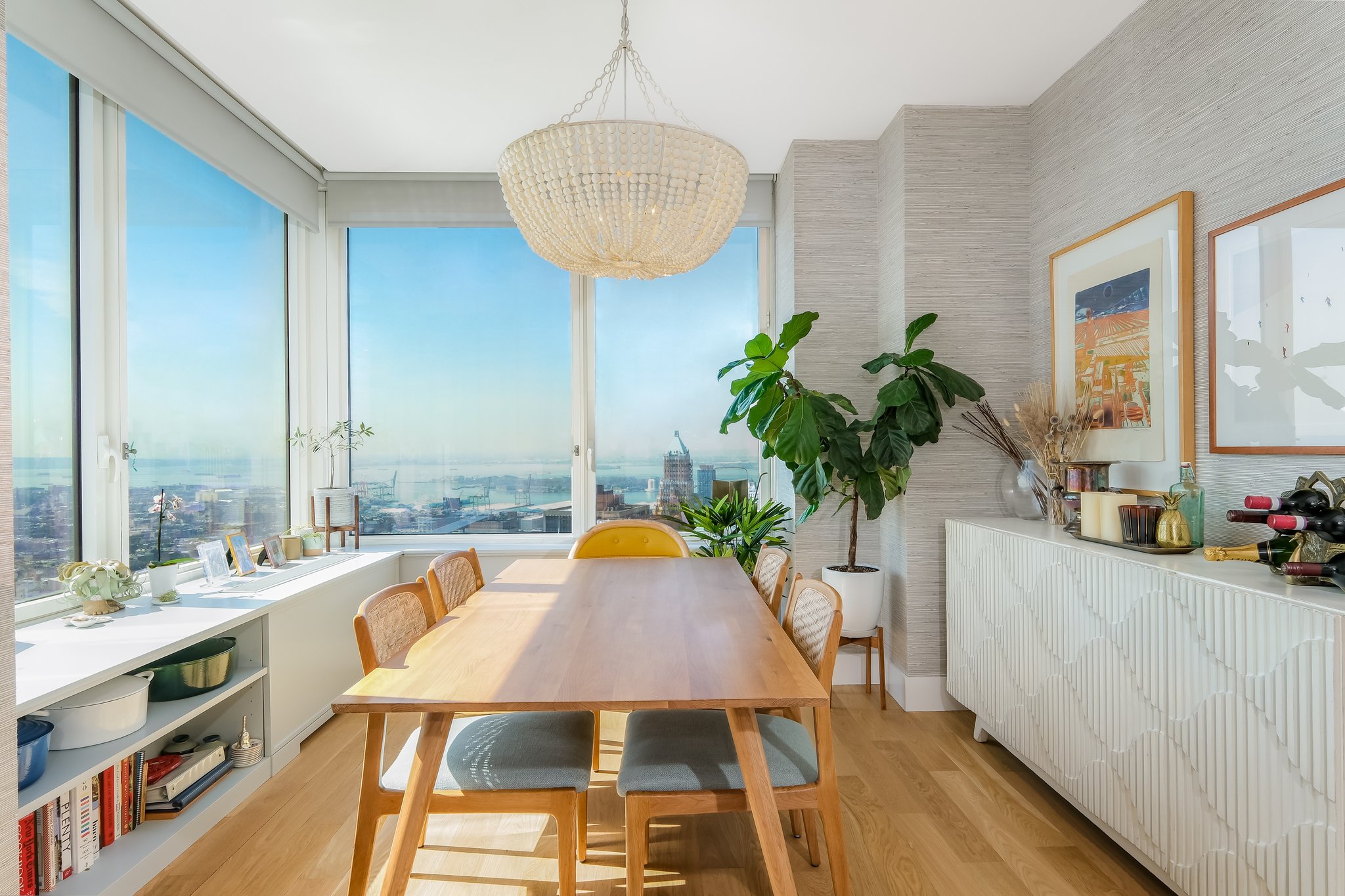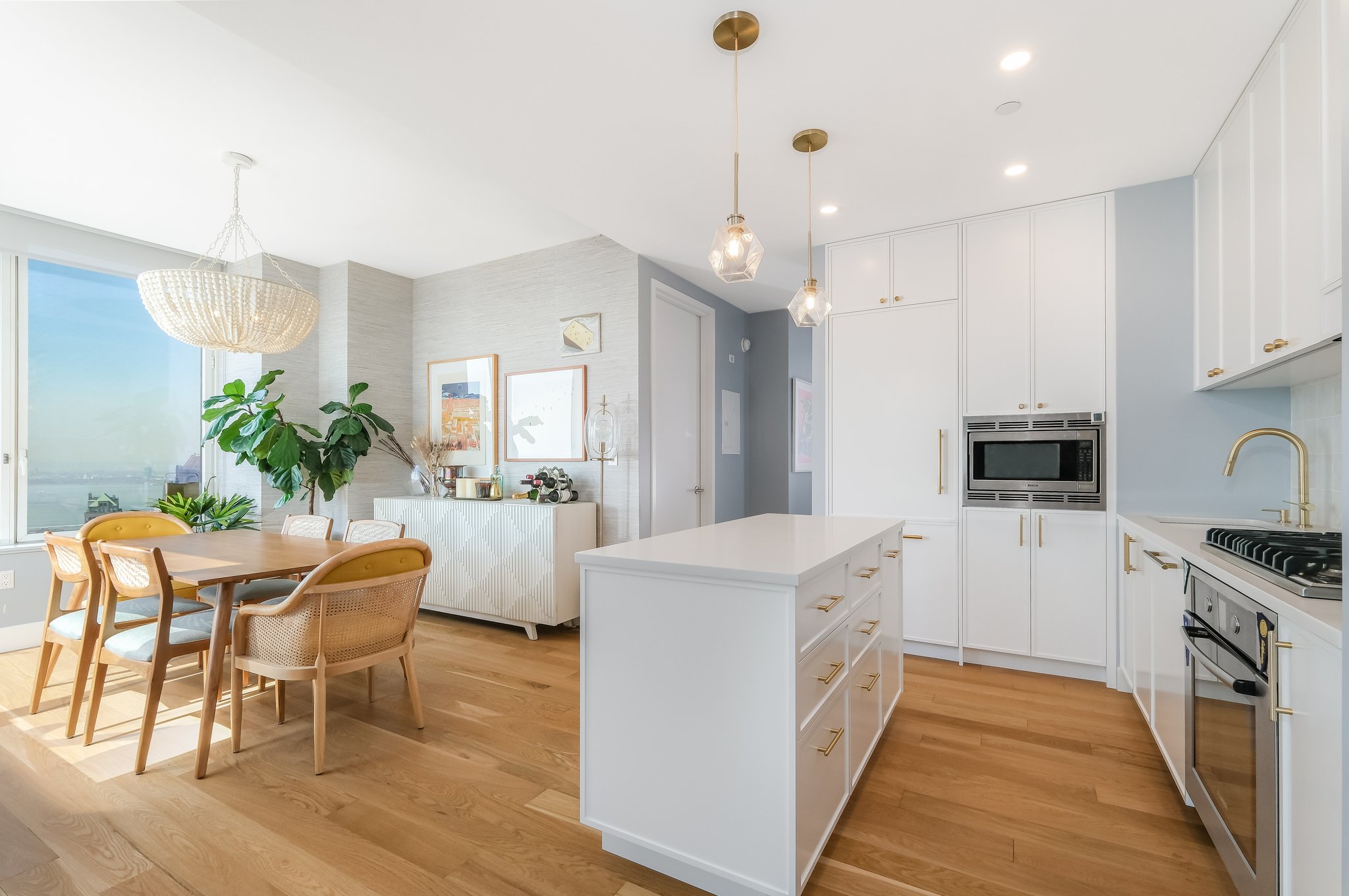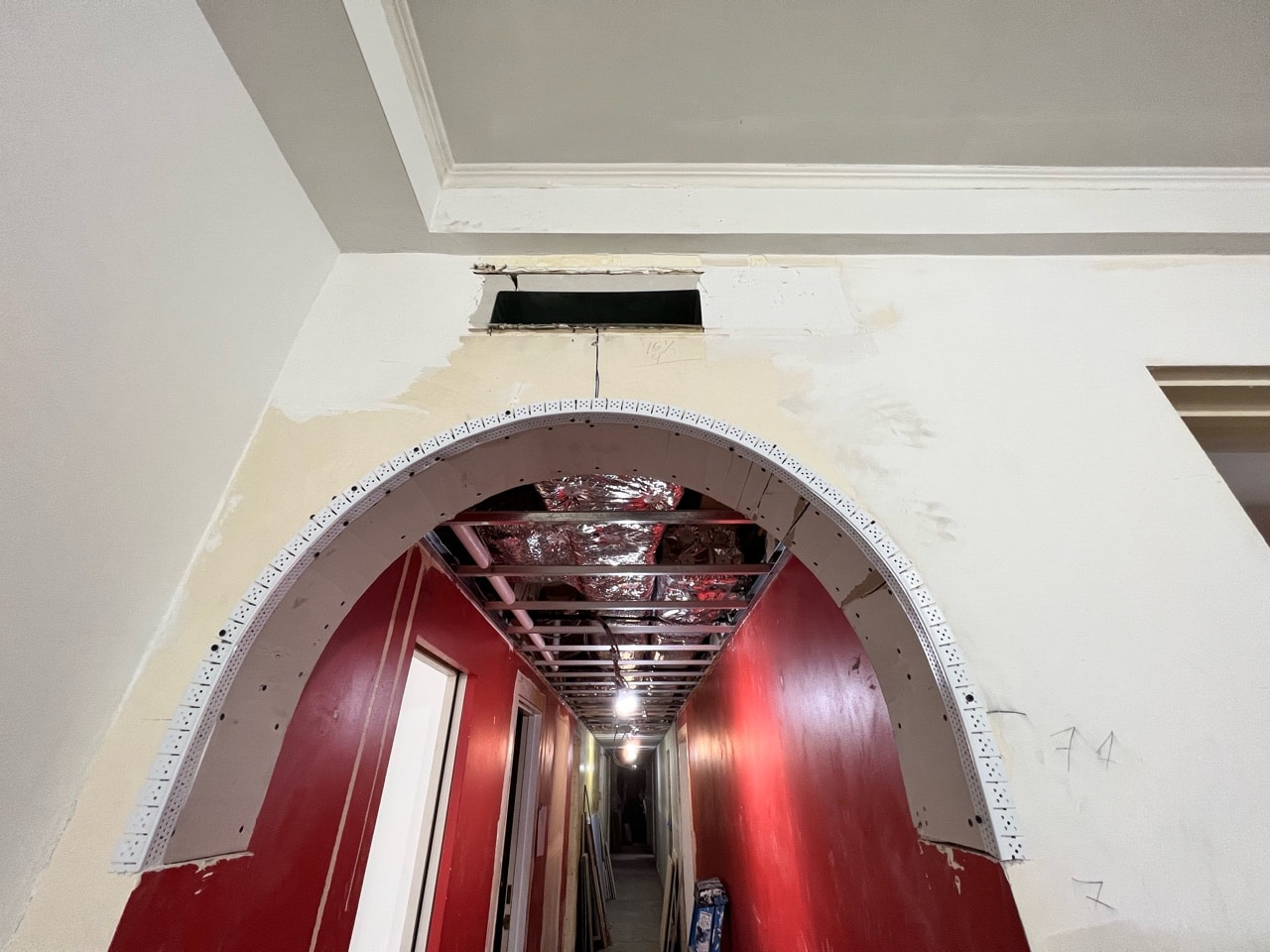How Does A Buyer Gauge The Timeline For A NYC Renovation?
Thinking of renovating your new NYC apartment? Here’s what can delay your timeline—and how to plan accordingly from day one.
May 20, 2025
|
.jpg)
How Does A Buyer Gauge The Timeline For A NYC Renovation?
Planning to renovate after buying in NYC? Learn what impacts your timeline—from scope to board approvals—before making the leap.
TABLE OF CONTENTS
- Understanding Renovation Scope And Impact On Timeline
- Location: How Your Building's Neighborhood Affects Renovation Timelines
- Management Company Policies And Their Timeline Implications
- Board Approval Process: Understanding The Timeline Before Buying
- Creating A Realistic Renovation Timeline For Your Purchase Decision
- How A Design Build Firm Helps Streamline The Entire Process And Ultimately Shortens Your Renovation Timeline
Ah, the excitement of a renovation. So much opportunity to upgrade various areas of your home - and life - all in one fell swoop. But, like most things that blossom, renovations take time and patience to reach full potential.
The right mindset starts with understanding what you’re getting into—especially if buying with plans to renovate. Once the ink dries on that mountain of paperwork, wanting to move in ASAP makes sense. But don’t get ahead of yourself. Buying a property that needs work means accepting realistic timelines and practicing measured patience.
One of the best ways to maintain a calm sense of anticipation is by understanding the components that shape a renovation timeline. This is an extended renovation process that affects buying decisions, move-in plans, and budgets. In this article, we break down the four key factors that impact NYC renovation timelines—scope, location, management company, and board—so you know what to expect from closing day to move-in. Because when the timeline makes sense, the waiting feels less like limbo and more like progress.

[#1]Understanding Renovation Scope And Impact On Timeline[#1]
Before a renovation begins—before designs are finalized, permits submitted, or walls come down—scope must be clearly defined. In NYC, where every square foot is under scrutiny and logistics are layered, the scope of work is one of the strongest indicators of how long a renovation will take. Here’s how to identify SOW:
Types of Renovation Scope
Projects generally fall into four categories: cosmetic, minor, moderate, and full gut. At Gallery, we mostly service renovations requiring a moderate or full gut renovation.
Cosmetic Updates
Surface-level improvements like painting, lighting swaps, or flooring. These may not require permits or building approvals, so timelines are often 2 to 6 weeks.
Minor Renovations
Think custom millwork, appliance upgrades, or light kitchen/bath updates without layout or plumbing changes. Expect 6 to 12 weeks, depending on trades and material lead times.
Moderate Renovations
Now you’re dealing with layout changes, plumbing/electrical work, and full kitchen or bath replacements. These typically require permits and approvals. Timelines range from 3 to 6 months.
Gut Renovations
A complete interior overhaul—mechanicals, finishes, layouts, possibly windows. These comprehensive projects often take 6 to 12 months, longer in co-ops or landmarked buildings. Do learn more about this thorough renovation process, read our popular article Gut Renovations In New York City 101.
What Typically Extends a Timeline?
Even with a well-planned renovation, certain factors have the potential to extend the timeline—especially when unanticipated. As the leading full-service design-build firm in NYC, we work to identify and address these elements proactively:
DOB Filings & Permit Approvals
Filing delays often stem from incomplete or non-compliant submissions. Our in-house architect and expediting team ensure that plans are code-compliant and complete before submission, minimizing review cycles and rejections. Read more via our blog, The Role of an Expediter in Your NYC Renovation: A Detailed Look.
Co-Op Board & Building Management Reviews
As expected in NYC, every building we work in is unique, which means each has a specific schedule and set of rules. We coordinate directly with management and boards to submit polished, board-ready packages that align with building expectations—helping to prevent approval-related bottlenecks.
Lead Times For Custom Materials Or Appliances
From custom cabinetry to specialty finishes, long lead times are a reality - especially when tariffs are affecting trade logistics (Read: How Tariffs Are Raising NYC Renovation Costs—And the Smartest Way to Manage Them). Our goal is to guide clients through material selections early in the design process, so everything is ordered well in advance of requirement onsite.
Structural Or Unforeseen Conditions Uncovered During Demolition
As discussed in our article Common Surprises When Renovating A NYC Apartment, aging buildings often hide surprises. Peek-a-boo - you’ve got asbestos. Our early feasibility reviews and pre-construction walkthroughs aim to spot signs of trouble before walls come down, allowing us to adjust plans and timeline expectations accordingly.
Change Orders Or Expanded Scope Mid-Project
Midstream changes can create ripple effects across trades, schedules, and approvals. Through detailed planning and upfront collaboration, we help clients make key decisions before construction begins—reducing the temptation to pivot mid-project.

How Expanding Scope Affects the Timeline
Once construction begins, the scope of work still has a tendency to evolve. Perhaps the two bathrooms under renovation come together beautifully—and suddenly the third, which once felt “fine,” now seems overdue for an upgrade. Or that freshly framed hallway feels six inches too narrow, prompting a change before sheetrock goes up. Whatever the reason, expanded scope requires additional coordination, revised designs, and often updated filings—all of which can extend the timeline.
Our role is to anticipate these scenarios and guide you through early decision-making. If you are on the fence about including certain spaces or upgrades, we help you weigh the pros and cons during the design phase—before crews are onsite and timelines are underway. The more defined the scope, the more predictable the timeline.
Assessing True Scope Before Buying
When viewing a property, especially a fixer-upper, potential buyers can easily underestimate what will be involved. A few things to look for:
- Check Ceiling & Wall Conditions: Uneven surfaces often point to deeper issues
- Open Cabinets & Closets: They can reveal outdated plumbing or poor electrical work
- Ask About Prior Renovations: Knowing what has (and hasn’t) been touched helps flag potential upgrades.
Buyers working with Gallery get access to pre-purchase walkthroughs and early feasibility reviews. We often help clients identify scope risks up front—before the offer is made—so they have a realistic understanding of what’s possible, what’s required, and how long accommodation will take.
Still on the fence about your purchase? Read Cost Comparison: Buying A Turnkey Apartment Vs Renovating A Fixer Upper In Manhattan.
.jpg)
[#2]Location: How Your Building's Neighborhood Affects Renovation Timelines[#2]
In NYC, location affects your renovation timeline more than you might realize. Your building and neighborhood introduce their own set of logistical, regulatory, and access-related variables that directly shape the pace of construction.
Local Boards, Landmark Status, and Permitting Delays
Some neighborhoods come with more oversight than others. If your building sits in a historic district—think West Village, Brooklyn Heights, or parts of the Upper East Side—you may need approvals from the Landmarks Preservation Commission (LPC) before permits can even be filed with the Department of Buildings (DOB). That adds a layer of review and, in some cases, design constraints that can extend pre-construction timelines by weeks or months.
Similarly, certain community boards are more hands-on. In parts of Manhattan, community input may be required for exterior work, rooftop additions, or sidewalk-facing changes, all of which bring likely delays.
- Additional Reading: Everything You Need to Know About Landmark Renovations In NYC
Variability In DOB Processing By Borough
Permit timelines vary depending on demand. While the DOB oversees the entire city, the volume of filings and resource allocation differs from borough to borough:
- Manhattan tends to have a high volume of complex applications, especially for co-ops and landmarked buildings. Expect longer processing and review times
- Brooklyn may process certain permits faster, but high-growth areas like Downtown Brooklyn still experience bottlenecks
Working with an experienced team familiar with the quirks of each borough’s DOB office is essential for navigating location-based differences efficiently. As a priority design-build firm in NYC, we bring that knowledge to the table from day one.
.jpg)
Timeline Variations By SOW & Neighborhood: Examples From Our Portfolio
Our NYC renovation portfolio spans a wide range of project types, sizes, and locations across Manhattan and Brooklyn. Below are a few examples that highlight how timelines can vary based on location and square footage:
- Our gut renovation of this 1,800 square foot Sutton Place co-op at The Sovereign on 425 East 58th Street—with clear scope and traditional style—took 8 months from permit to completion
- An expanded scope in a landmarked co-op on the Upper East Side may extend upwards of 10 months, which is what happened for our gut renovation of a 4,000 SF pre-war co-op at 1035 Central Park West—which called for a complete design overhaul of the extensive space
- A cosmetic renovation in a Lincoln Square condo might take 4 to 6 months, as we saw for our 2,100 square foot condo renovation in The Coronado at 155 West 70th Street, thanks to help from straightforward building rules and snappy DOB filings
Understanding the impact of these nuances early helps set realistic expectations and avoid unnecessary anxiety. At Gallery, we factor in location specs from the start, helping clients navigate the variables that shape every NYC renovation timeline.
-min.JPG)
[#3]Management Company Policies And Their Timeline Implications[#3]
In NYC, building management companies play a central role in shaping renovation timelines—often in ways buyers don’t anticipate until after the purchase. Whether you’re buying a co-op or a condo, understanding how a management company operates—and what they require—can make the difference between a streamlined renovation and a stalled one.
The Management Company’s Role in Renovations
Management companies act as gatekeepers for building renovations. They are responsible for enforcing house rules, overseeing alteration agreements, coordinating with building staff, and ensuring work does not disrupt other residents.
Before any work begins, your proposed renovation must be reviewed and approved by the building management—and in co-ops, also the board. This process includes extreme scrutiny of your plans, contractor credentials, insurance documents, and the overall impact of the work.
How Size And Experience Influence Efficiency
Not all management companies operate at the same pace. Some are well-staffed and accustomed to handling multiple renovations at once. Others may be slower to respond, particularly if they manage older buildings or have limited administrative resources.
Responsiveness, clarity of guidelines, and familiarity with DOB protocols all influence how quickly your project moves forward.
Common Renovation Requirements
Management companies typically require several items before they’ll greenlight your renovation:
- Alteration Agreement Outlining Scope, Hours, And Liability
- Contractor Insurance (Naming The Building And Managing Agent As Additionally Insured)
- Security Deposit Held In Escrow Against Potential Damage
- Administrative Or Legal Fees For Document Review
- Detailed Architectural Plans And Dob Filings, If Applicable
Turnaround time often depends on how complete and accurate your submission is. Incomplete paperwork is one of the most common causes of delays.
Working Effectively With Management Companies
The approval process goes more smoothly when you anticipate management’s needs and communicate clearly from the start. Tactics include:
- Submitting Complete, Professional Design Plans With Your Application
- Choosing A Licensed/Insured Contractor Familiar With NYC Co-Op & Condo Work
- Maintaining Ongoing Communication With The Managing Agent
- Staying Proactive About Required Revisions Or Missing Documents
At Gallery, we take on this coordination directly, acting as the primary liaison between your team and the management company. We know how to work within their systems, preempt common obstacles, and keep your renovation timeline on track.
%20Gallery%20KBNY.JPG)
[#4]Board Approval Process: Understanding The Timeline Before Buying[#4]
When purchasing a co-op or condo in New York City with renovation plans in mind, the board approval process is a critical factor that directly affects your renovation timeline. The timeline can vary widely depending on the type of building, how frequently the board meets, and their overall stance on renovations.
Co-Op Vs. Condo: Different Structures, Different Timelines
The board approval process differs depending on whether the property is a co-op or condo:
- Co-Op Timelines: Co-ops typically require both board and managing agent approval for any renovations. In most cases, the board must vote on your proposed plans—often at a monthly or bimonthly meeting—before work can begin. This structure tends to result in longer approval timelines.
- Condo Timelines: Condos usually have a more streamlined process. While you’ll still need to submit an alteration agreement and secure management’s sign-off, full board approval is not always required. That said, some condos do function more like co-ops in practice, so due diligence is still key.
In both cases, plan on budgeting several weeks—or even a couple of months—for board-related approvals before any work starts.
Timing Depends On The Board’s Meeting Schedule
The frequency of board meetings can significantly influence your renovation schedule. Many NYC buildings have boards that meet once per month. If your plans miss the cutoff for an upcoming meeting, you may be pushed to the next cycle.
In co-ops especially, the process usually follows this sequence:
- Submit Renovation Plans And Alteration Agreement To Management
- Managing Agent Reviews And Prepares Submission For The Board
- Board Reviews And Votes At Their Next Scheduled Meeting
- Approval Granted (Or Revisions Requested)
This timeline can stretch anywhere from 4 to 10 weeks—or longer—depending on responsiveness and project complexity. At Gallery, we initiate contact with the board ASAP in order to gain understanding of when and where scheduling needs to occur in order to streamline our timeline.
What Is an Alteration Agreement, and How Long Does It Take?
The alteration agreement is the formal document outlining the scope of your renovation, insurance requirements, working hours, protections for building systems, and more. It’s required in both co-ops and condos and must be reviewed and approved before work begins.
Timelines for alteration agreement review depend on:
- Clarity And Completeness Of Submission
- Whether Architectural Or DOB Plans Are Required
- Management’s Workload And Internal Review Process
- Coordination With Building Staff)
Incomplete or unclear plans can slow this process considerably. Our detailed team at Gallery ensures your documents are packaged properly from the start—often expediting approval.
- Additional Reading: NYC Alteration Agreements: Everything You Need To Know
%20Gallery%20KBNY.JPG)
[#5]Creating A Realistic Renovation Timeline For Your Purchase Decision[#5]
Beyond a strong vision and renovation plan, buying in NYC with intent to renovate requires patience. It is a virtue, after all. As your design-build partner, we help you understand how factors like scope, location, building management, and board approvals impact your renovation timeline. With this clarity up front, you can make smarter, better-informed decisions about when to close, when to start construction, and how to plan your life overhaul with confidence.
Combine All Key Factors to Build a Realistic Timeline
A renovation timeline is never shaped by just one element. Instead, it reflects the combined influence of:
- Scope Of Renovation: Cosmetic vs. full gut affects both design and construction durations
- Location: Neighborhood conditions impact DOB processing, access, and logistics
- Management Company Policies: Varying requirements and efficiencies affect approval timelines
- Board Review Process: Co-ops and condos differ in review time, frequency, and restrictions.
Mapping how these factors apply to the specific property you’re considering is the starting point for developing a timeline that aligns with your purchase and move-in plans.
Estimate Best, Likely, and Worst-Case Scenarios
A common strategy used by experienced renovators is to develop three timeline estimates:
- Best Scenario: Fast board and management approvals, no permit delays, minor scope.
- Likely Scenario: Standard board schedule, moderate review time, some DOB delays.
- Worst Scenario: Slow board approvals, complex permitting, expanded scope mid-project.
For example, if your renovation is a full kitchen and bath update in a co-op:
- Best Case: 4-6 months from closing to completion
- Likely Case: 6–8 months
- Worst Case: 9+ months (delays in DOB filings, board feedback, or contractor scheduling)
Building out these scenarios allows you to enter the purchase with eyes open, rather than reacting to surprises post-closing.
Include Buffer Time in Your Renovation Plan
Regardless of your timeline scenario, adding buffer time is critical. Between permit reviews, unexpected site conditions, and shifting contractor availability, delays are not uncommon. A general rule of thumb is to build in at least 4 to 8 extra weeks beyond your projected end date—especially if coordinating with a lease expiration or school enrollment.
Coordinate Closing Dates, Lease Endings, and Renovation Timelines
Renovations don’t typically begin immediately after closing. In many cases, design finalization, DOB filings, and building approvals take several weeks before demolition can begin. This gap between closing and construction is essential to account for.
When structuring your purchase and move, we recommend our clients always:
- Maintain Flexibility With Your Lease Or Have Temporary Housing Ready
- Start Design Development During The Contract Phase To Get A Head Start
- Align Move-in Expectations With Realistic Timelines, Not Best-Case Scenarios
Gallery works closely with buyers to sequence these milestones with care, helping you move forward confidently—not prematurely.
.jpg)
[#6]How A Design Build Firm Helps Streamline The Entire Process And Ultimately Shortens Your Renovation Timeline [#6]
In New York City, where every renovation involves multiple layers of approval, coordination, and logistics, working with a design-build firm like Gallery offers more than convenience. This full-service and all-inclusive approach to complex renovations can be a defining factor in keeping your project on track—and your overall costs in check.
Delays Are Not Just Inconvenient—They’re Expensive
Every additional week your renovation is delayed means added carrying costs—mortgage payments, maintenance fees, property taxes—without the benefit of being able to live in or rent out the space. This is even more so the case in pre-war homes, where deadlines are even more strict and come with excessive overage fees. If temporary housing is part of your plan, those expenses compound quickly. A design-build firm helps reduce these risks by creating continuity from day one. Rather than managing separate teams for architecture, design, and construction, every part of your team is under one roof—minimizing delays caused by communication gaps or sequencing issues.
Pricing And Availability Shift With Time
When timelines stretch, contractor pricing can fluctuate. Materials may increase in cost, labor availability can shift, and quotes obtained during early planning stages may no longer hold. Prolonged approval processes, particularly with boards or the DOB, make this a real concern.
That's not the case with a true design-build firm like Gallery. We actively manage pre-construction phases with an eye toward maintaining momentum—finalizing selections and permitting packages early, locking in vendor pricing where possible, and avoiding costly lulls between approvals and construction start.
Budgeting for Timeline Uncertainty
Renovation planning should account for variables, particularly when tied to a property purchase. At Gallery we help you build a realistic financial model from the outset—one that includes:
- Estimated Monthly Carrying Costs During Renovation
- Potential Temporary Housing Expenses
- Construction Buffers For Pricing Adjustments
- Timeline Flexibility To Align Closing, Approvals, And Move-In
This level of foresight helps buyers make informed decisions—not just about the property itself, but about how to sequence purchase and renovation in a way that works financially and logistically.
Streamlining Across All Phases
From coordinating early building approvals to managing the renovation schedule post-permit, a design-build firm offers a centralized approach with measurable timeline advantages. Key benefits include:
- Earlier Insight Into Scope And Cost, Allowing For Faster Decision-Making
- Prepared, Board-Compliant Alteration Packages Submitted Promptly
- Seamless Transitions From Design To Construction Without Downtime
- Ongoing Schedule Management That Prioritizes Efficiency Without Cutting Corners
At Gallery, this approach is designed to protect both your time and investment—so the moment you close, you are already moving forward with purpose.
- Additional Reading: How To Distinguish True Design-Build Expertise For NYC Apartment Renovations
.jpg)
Wrapping Up
Ultimately, understanding all factors that impact a timeline is key to successfully creating fair expectations from closing day to move-in. By factoring in scope, location, building management, and board approval, you can create a realistic timeline that factors in all angles and minimizes surprises as a result.
For smooth execution and a more hands-off, all-inclusive approach, consider working with a full-service design-build firm like Gallery. View our portfolio of apartment renovations in Manhattan or Brooklyn, learn more about Gallery, or contact us today.
We are an award-winning design-build firm in New York City with a full-service approach to Big Apple renovations that includes everything from interior design and architecture services to filing permits and construction management. We’re experts in pre-war apartment renovations, apartment combinations, room creations, full gut renovations and all that falls in between. Let us bring your dream home to life.

.png)
.png)





.jpg)

%20(2).jpg)


.jpg)
%20Gallery%20KBNY.JPG)


